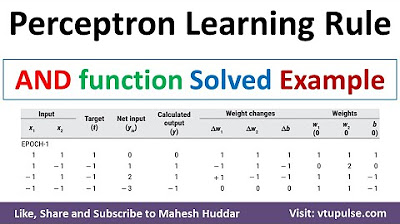Function Notation - GCSE Higher Maths
Summary
TLDRIn this video, viewers are introduced to function notation, learning how inputs are transformed into outputs through a series of operations. The example begins with simple numbers, demonstrating how functions like f(x) = 2x + 5 work by applying arithmetic steps. The video then moves on to more complex algebraic functions, showing how to substitute values for x and calculate outputs. The script covers both basic and more intricate examples, including negative numbers and polynomial functions, while emphasizing the use of function notation like f(x) and g(x). Viewers will gain a clearer understanding of how to handle and compute functions effectively.
Takeaways
- 😀 Function notation is a way of representing functions using symbols, such as f(x) or g(x), instead of just describing their operations.
- 😀 A function machine takes an input, performs operations on it (like multiplication or addition), and gives an output.
- 😀 When the input is a number, like 7, the function machine multiplies it by 2 and then adds 5 to get the output (19 in this case).
- 😀 If the input is an algebraic expression, such as x, the function machine operates on it similarly, yielding 2x + 5 as the output.
- 😀 The notation f(x) represents a function of x and does not mean f times x, as the brackets are used for clarity.
- 😀 Function notation can also be used with numerical inputs, such as writing f(7) to find the output for the input of 7.
- 😀 To solve for f(x) when the input is a number, substitute the number into the function expression (e.g., f(7) = 2(7) + 5).
- 😀 In the example f(x) = 3x - 1, you can substitute values for x (like 2, 8, or -4) to find the output.
- 😀 To calculate f(2), substitute 2 into the function, resulting in f(2) = 3(2) - 1 = 5.
- 😀 For a different function, like g(x) = x³ + 5x, you can similarly substitute inputs and calculate the outputs (e.g., g(2) = 18).
- 😀 Function notation allows for quick evaluation of expressions with various inputs, such as g(5) = 150 and g(-3) = -42.
Q & A
What is function notation?
-Function notation is a way to express a mathematical function using symbols. It typically involves writing the function's name (such as f or g), followed by the input value in parentheses, e.g., f(x) or g(x). This notation allows us to clearly define the relationship between inputs and outputs.
How is function notation used in the example where the input is 7?
-In the example, when the input is 7, the function first multiplies 7 by 2 (which gives 14) and then adds 5 to that result (14 + 5 = 19). Using function notation, this is written as f(7) = 2(7) + 5, which equals 19.
What does 'f(x)' represent in the function f(x) = 2x + 5?
-'f(x)' represents the output of the function when the input is x. The function f(x) = 2x + 5 means that for any value of x, the output is calculated by multiplying x by 2 and then adding 5.
What is the difference between f(x) and f times x?
-In function notation, f(x) does not mean 'f times x'. It means 'the function f evaluated at x'. The notation with parentheses is just a way of indicating that x is the input of the function, not a multiplication.
How would you calculate f(2) if f(x) = 3x - 1?
-To calculate f(2), substitute 2 into the equation f(x) = 3x - 1. So, f(2) = 3(2) - 1 = 6 - 1 = 5.
How do you find f(8) when f(x) = 3x - 1?
-To calculate f(8), substitute 8 into the equation f(x) = 3x - 1. So, f(8) = 3(8) - 1 = 24 - 1 = 23.
What is the result of f(-4) if f(x) = 3x - 1?
-To find f(-4), substitute -4 into the equation f(x) = 3x - 1. So, f(-4) = 3(-4) - 1 = -12 - 1 = -13.
What is the general approach to solving for g(x) when g(x) = x³ + 5x?
-To solve for g(x), you substitute the given input value into the function. For example, for g(2), replace x with 2 in the equation: g(2) = 2³ + 5(2) = 8 + 10 = 18.
How do you calculate g(5) when g(x) = x³ + 5x?
-To calculate g(5), substitute 5 into the equation g(x) = x³ + 5x. So, g(5) = 5³ + 5(5) = 125 + 25 = 150.
What is the value of g(-3) if g(x) = x³ + 5x?
-To calculate g(-3), substitute -3 into the equation g(x) = x³ + 5x. So, g(-3) = (-3)³ + 5(-3) = -27 - 15 = -42.
Outlines

Esta sección está disponible solo para usuarios con suscripción. Por favor, mejora tu plan para acceder a esta parte.
Mejorar ahoraMindmap

Esta sección está disponible solo para usuarios con suscripción. Por favor, mejora tu plan para acceder a esta parte.
Mejorar ahoraKeywords

Esta sección está disponible solo para usuarios con suscripción. Por favor, mejora tu plan para acceder a esta parte.
Mejorar ahoraHighlights

Esta sección está disponible solo para usuarios con suscripción. Por favor, mejora tu plan para acceder a esta parte.
Mejorar ahoraTranscripts

Esta sección está disponible solo para usuarios con suscripción. Por favor, mejora tu plan para acceder a esta parte.
Mejorar ahoraVer Más Videos Relacionados

Function Notation with an Equation

Pembahasan materi FUNGSI (Domain & Range, Komposisi, Invers) KELAS 10 | #MatematikAsik

Production Function

Backpropagation Part 1: Mengupdate Bobot Hidden Layer | Machine Learning 101 | Eps 15

11. Implement AND function using perceptron networks for bipolar inputs and targets by Mahesh Huddar

What Kind of Organizational Assets are Business Processes?
5.0 / 5 (0 votes)
